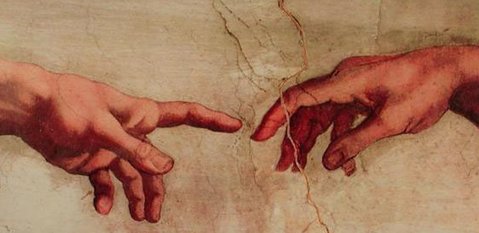Kepler-science.nl
The English pages can be found in the second row of the menu
De eerste rij knoppen in het menu is voor de Nederlandse pagina's
Fossils
Fossils often are the result of quick burial. Sometimes it's obvious that the burial happened in flowing mud. Fossil footsteps of dinosaurs sometimes are found in deeper layers than their bones. There are a lot of reasons to assume that most fossils were formed under catastrophic circumstances.
Another question is about missing links: direct descent cannot be deduced from the fossil record.
Forming of fossils
Fossils can be formed in a number of ways:
- Buried under sand or clay, closed off from oxygen (petrified fossils or only imprints)
- Caught in resin (insects in barnstone)
- In tar and asphalt marshes complete elepants can be found
- In acid peat marshes a kind of mummification takes place
- In dry caves or deserts they just dry out
- Caught in ice conservation including the flesh takes place
It's not hard to see that the circumstances for the forming of fossils often are linked to smaller or bigger catastrophes.
Does the fossil record reveal many intermediate species?
We will discuss the argument of the intermediate species on the basis of the assumption the evolutionary dating is right. Do we indeed find many intermediate species?
- The Tiktaalik is given as typical example - but the oldest tetrapode fossil is found below the Tiktaalik: imagine you being born before your grandfather...
- A bit the same applies to the Archeopterix, which for a long time was supposed to be the intermediate between Dinosaur and Bird - until first one and then more bird fossils were found in 'older' strata.
- Quite a few complex life forms seem to appear suddenly in the Cambrium (it is called the Cambrium explosion: most of the animal Phyla are already present overthere) - below this layer hardly any fossils are found.
- Look e.g. at the supposed lineage of horses and wonder why the first one has 18 ribs, the Eohippus 15, the Pliohippus 19 and the Equus 18.
Whale evolution
This is supposed to have happened in about 15 million years - not much on evolutionary time scale for so many features that have to change. Let's take a look at some questions about it:
- Evolutionists speak about 'walking whales' because they think the first three or four in line of succession could walk - but they don't look like whales at all - so this name shows bias.
- The only feature that connects the five stages of whale evolution with the real whale, is the involucrum: a small part of the middle ear. That's a very shallow basis to decide on a line of descent.
- Whale ears are - by the way - quite different: their bones need to be isolated from the skull because of the hearing under water. The ear drum needs to be protected from the high pressure (some whales dive very deep).
- The tail in whales is very special (it moves up and down) and is't found in any of the intermediate species.
- Baleen whales don't have teeth at all. The so-called tooth-buds in baleen whales are quite different and there are a lot more than teeth of supposed ancestors (40 pairs in stead of 15 pairs)
- The oldest real whale fossil is older than some of the supposed ancestors.
- Important for whales is the blowhole on top (the nose), but it is clear this blowhole doesn't move upwards at all in this series of supposed ancestors.
For more information on this topic you can use links 3 and 4.
Dragons and dinosaurs
Very interesting are the stories on dragons - up to pretty recent times - and the soft tissue that has been found in dinosaur fossils. Links 9-12 supply more information about that and the video "Dragons or Dinosaurs" discusses the evidence.
Links:
- Download: salt formations
- Wikipedia on Flood geology and Polystrate trees
- Whale evolution discussed by Jonathan Sarfati
- A simple and short video about whale evolution
- What about the fossil record?
- Articles about Living fossils, Fresh fossils and Flood geology
- About: floating forests, or download: floating forest 1 and floating forest 2.
- Read: ancient fossil looks like todays worms
- About soft tissue found in T. rex bones
- A different explanation of this soft tissue
- More soft tissue found, also featured in the Guardian
- DNA was detected in a duckbilled dino.
- All about dinosaurs on Answers in Genesis
- About dinosaurs in the creation museum.
- When were dinosaurs created?
- A school of small fish fossilized.
- A fossil fern in Sweden shows chromosome details: buried during the Flood?
- About carbon-dated fossil tissue of T. rex: article 1, article 2 and video
- For more Dutch links go to: 'fossielen'








